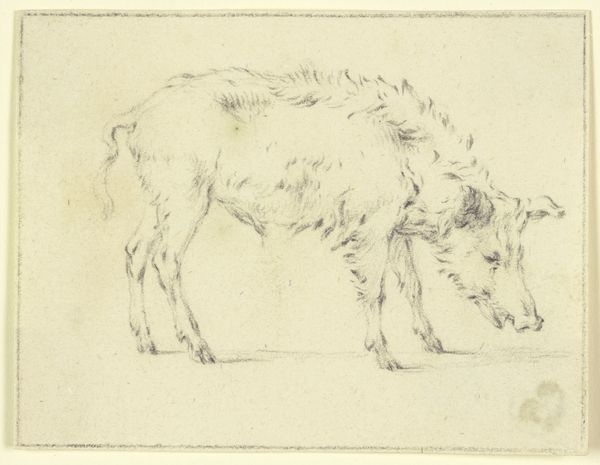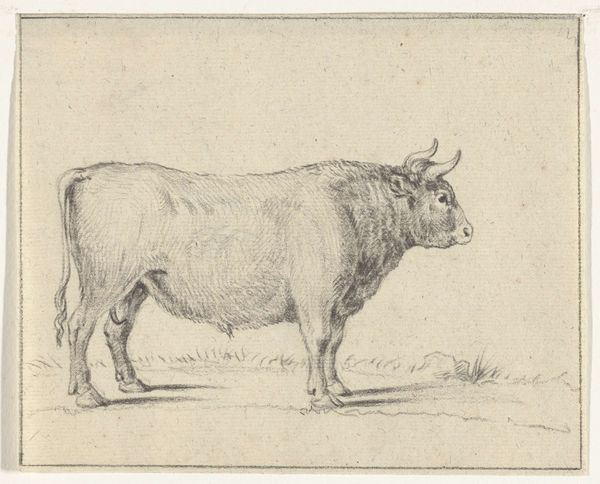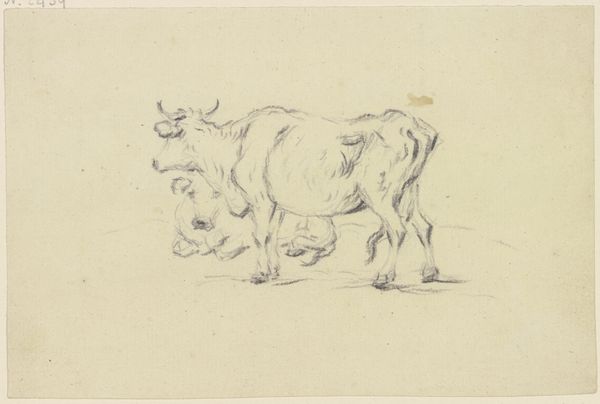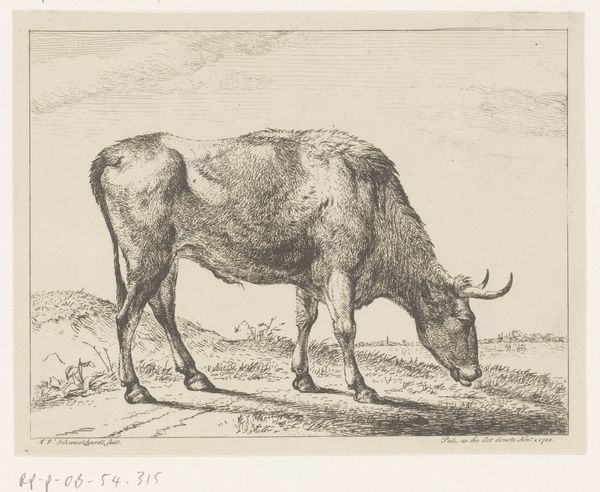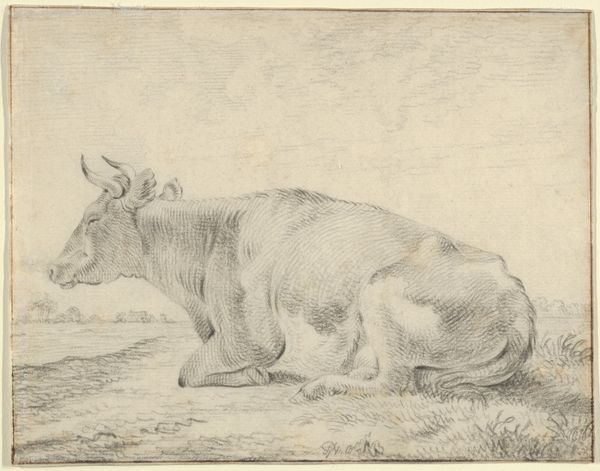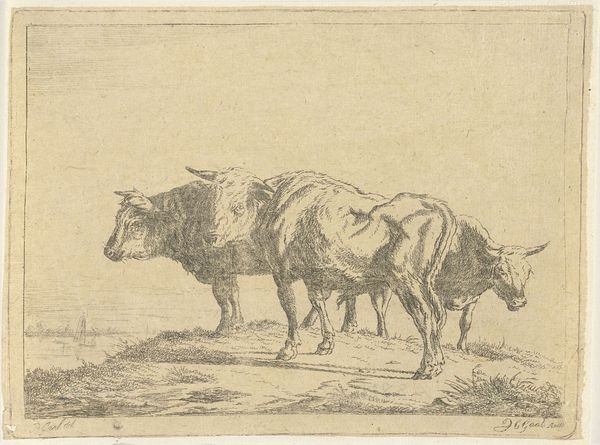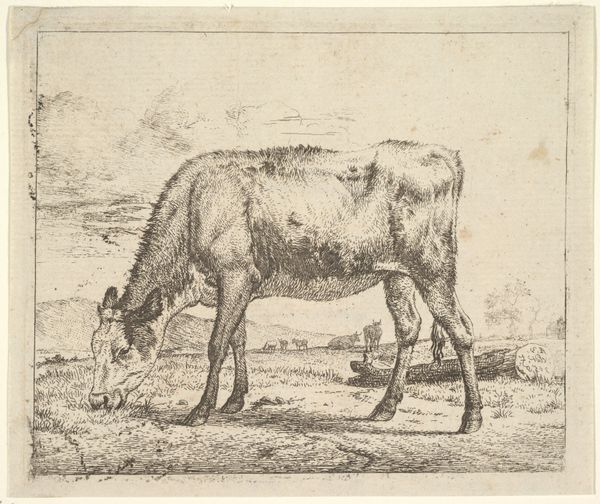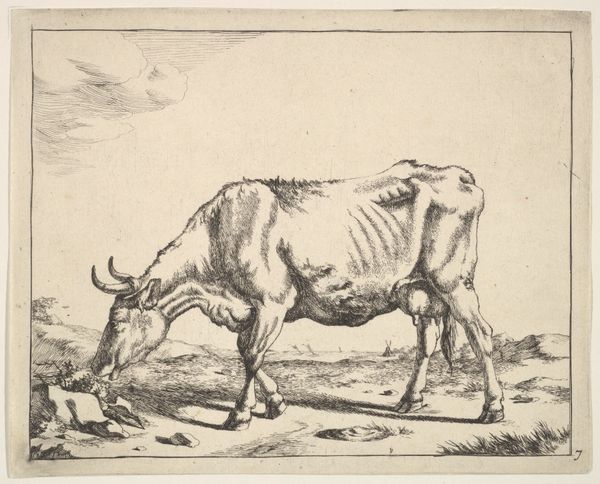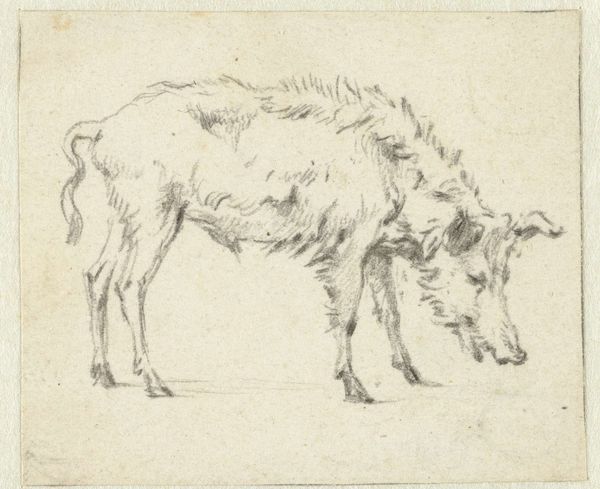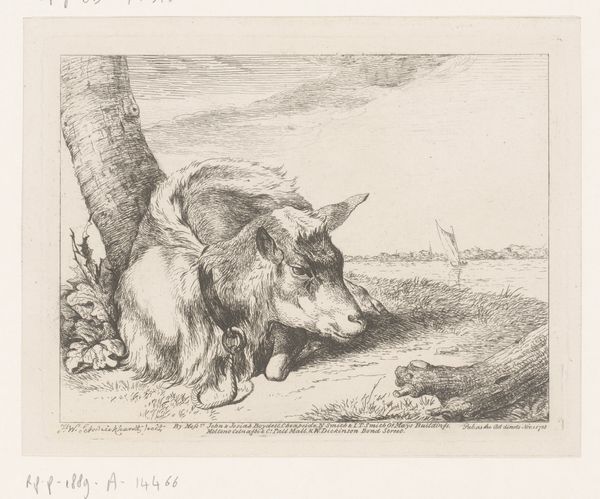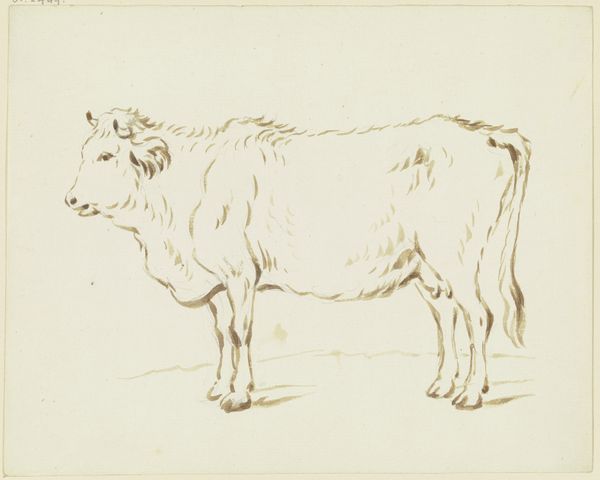
drawing, pencil
#
portrait
#
pencil drawn
#
drawing
#
amateur sketch
#
toned paper
#
light pencil work
#
pencil sketch
#
incomplete sketchy
#
landscape
#
figuration
#
personal sketchbook
#
ink drawing experimentation
#
pencil
#
sketchbook drawing
#
pencil work
#
realism
Dimensions: height 152 mm, width 192 mm
Copyright: Rijks Museum: Open Domain
Curator: Welcome! Today we are looking at “Standing Pig, Facing Left, Before a Post,” a drawing by Jean Bernard, likely created between 1775 and 1833. Editor: Immediately, it feels unfinished, but in a charming way. The heavy-bodied pig seems burdened, the posture suggests a resignation, which I think many women might relate to! Curator: It's rendered in pencil, and it has the appearance of a quick study, perhaps from a sketchbook. Notice how the artist uses varied line weights to describe the texture of the pig's coat. A simple and lovely representation. The animal feels symbolic of an oppressed agrarian class to me. Editor: Absolutely! Though what do you make of that… thing… sticking up from the pig's back? Is that a post as indicated in the title, or something else? Given what we know of depictions of women at that time, maybe it points to society treating the laboring class as farm animals that are just as disposable as tools for agrarian work, rather than being fully formed humans with needs. Curator: Interesting interpretation, particularly given your focus on historical context! For me, the ‘post’ takes on the qualities of a column. It represents the burdens that these beings carry; the weight and labor associated with this animal become the symbolic pillars on which an entire socio-economic system is built. The drawing itself mirrors something more primal than commentary about social inequalities—which I’m sure were as prevalent then as they are now. Editor: It makes one consider the role of such seemingly simple scenes, like farm animals or other depictions of ‘natural life.’ Such illustrations can also act as moral messages of social hierarchies: that there is a right and a wrong kind of being, in this life. Do we read such pieces simply for the artistic rendering or do we see it as propaganda supporting that era? Curator: I see that you’re more focused on its role in potentially upholding systems of inequality. Perhaps that "burden" or ‘post’ becomes not just an objective burden of work, but a signifier of something deeply unequal within the historical depiction of lower-class labor. Fascinating. Editor: Thank you! Curator: Yes, this piece feels much larger when considering multiple points of view.
Comments
No comments
Be the first to comment and join the conversation on the ultimate creative platform.
